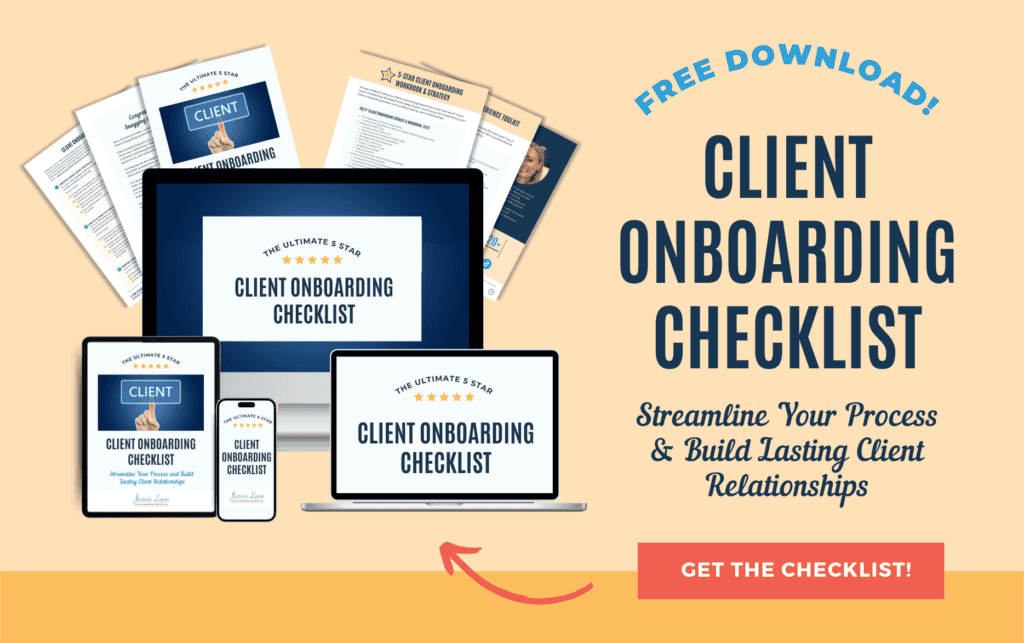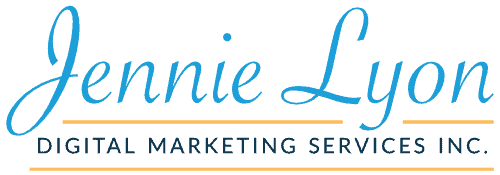7 Steps to Automating Your Client Onboarding + Free Checklist

Onboarding new clients is one of the most time-consuming and important tasks for any small business. Ideally, your onboarding system should run smoothly and leave clients feeling taken care of, but in the messiness of real life, that doesn’t always happen. I find that the best way to manage onboarding successfully is to automate as much of the process as possible.
Of course, you still need to give the prospects and new clients your personal time and attention! However, if you can leave all the details to be dealt with according to a set of basic procedures, it frees up your time to give the best possible client care and get your business working for them straight away. With that in mind, I am sharing my 7-step process for automating the client onboarding process along with my client onboarding checklist, which you can either download and use on your computer (it’s a fillable form!) or print out and check off at your desk.
[Tweet “Having an effective onboarding system for new clients ensures they want to work with you again.”]
Step #1: Offer a Consultation
For scheduling consultation calls with prospective clients, my favorite application to use is vCita. It is a fantastic point of first contact that gives your business that extra level of professionalism. I love using it to automatically schedule free consultation calls—it seamlessly syncs with my online calendar, sends professional reminders to prospects of their upcoming consultation, allows me to communicate directly with prospects and clients through the user interface, and integrates wonderfully into my website.
Step #2: Follow Up with Prospects
The follow-up phase is essential for cementing your business relationship with new clients, and it’s the point at which most entrepreneurs get derailed and miscommunications happen. I always recommend sitting down and writing out exactly the steps your ideal follow-up sequence would contain (i.e. check-in emails, progress reports, etc.) and then creating templates for each of them. If you have a pre-existing set of follow-up documents, and a schedule for when to send them out, you’ll be much more likely to do it on time and in a way which is reassuring to your new clients.
Step #3: Send a Document for e-Signature
Once a client is ready to sign on the dotted line, you need a simple system for getting all the fine print and legalities out of the way that works for both your business and your clients. My top choice for getting e-signatures is DocuSign, probably the most widespread and most trustworthy option for online business. It allows instant reviewing and signing of proposals and contracts, without the all the fuss and technical difficulties that are involved with sending PDFs back and forth. If you are looking for a great contract template to use in your business, here is the one that I use with all of my clients.
Step #4: Wow them with Your Welcome Kit
Once you have the client all signed up, a welcome kit is the best way to introduce them to your business policies and give them all the information they need to work with you. In much the same way as a procedure manual helps to familiarize new team members with the workings of your business, a welcome kit should be a one-stop source for any questions a client may have.
Step #5: Automate Your Invoicing
If you haven’t got an automated invoicing system set up, and you’re still fiddling with hand-made templates that you send attached to emails, with no live links to automatic payment options, you really need to get on that! There are so many invoicing programs available out there, and you really can use whichever suits your business needs and your budget. My favorite, hands-down is Harvest, it integrates with my project management system, an allows me to accept payments via credit card, PayPal and check. Having clean-looking, professional invoices which are customized to your business and include links to payment options for your clients will leave them with a good impression.
Step #6: Project Management is Key
In terms of project management, there are a few options out there, but for my money, I have to say the best value for functionality and ease-of-use is Asana. This is the single most important tool I use every single day to run Jennie Lyon Virtual Assistant Services, and it is a huge part of my success as a small business owner! Asana ensures that nothing falls through the cracks and that every project I work is finished in a timely manner.
Step #7: Track Your Progress
For every business that bills clients on a project or hourly basis, accurate time tracking are essential. In my opinion, the best time tracking software available right now is Harvest, because it is so easy to use and can be customized to track multiple projects and tasks for multiple clients. As stated above, it is also a robust invoicing system which makes it a win-win in my book!
[Tweet “By automating essential aspects of your client onboarding, you’ll save time and money.”]
I hope this list gives you some inspiration for creating your own automated client onboarding systems. Of course, if you don’t have the time to overhaul your onboarding, a virtual assistant can get your business set up with all of these tools, and handle any other tasks you may be behind on. If you need help setting up your client onboarding system, let me know, I would love to help!

Onboarding new clients can be super time consuming. The solution is to automate much of the process, so you don’t have to do a thing. If you want to get your client onboarding in shape, download the Free Checklist.























[…] Strong, lasting relationships with clients are built on a foundation of regular communication. From your first messages during the onboarding phase, to your regular back-and-forth while working together on a project, and later checking in to make […]